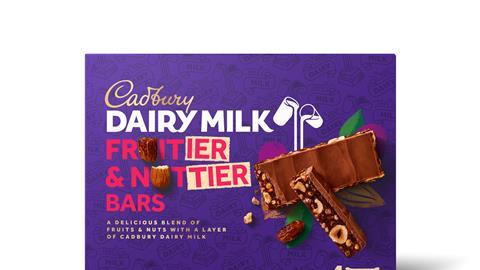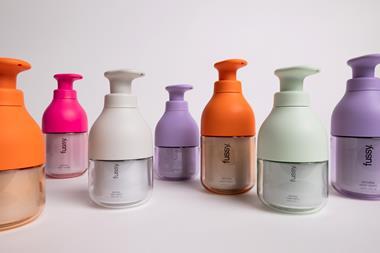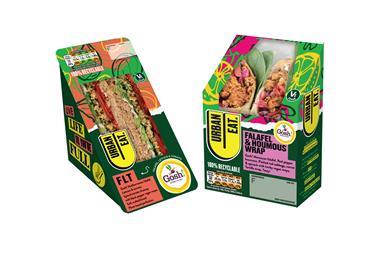Cadbury’s non-HFSS NPD promises a treat ‘without compromise’
Cadbury Dairy Milk has taken the plunge on HFSS. Last week, it launched its first compliant range, Fruitier & Nuttier.
It’s the result of a year of development by Britain’s biggest chocolate brand. So, has Cadbury finally cracked the nut of HFSS compliance in confectionery? And how will it sell?
In a wider context, these latest launches are only part of how Cadbury owner Mondelez plans to tackle HFSS rules. It has been refining a technology it claims could cut the amount of sugar and fat from its chocolate and biscuit brands – including Crunchie, Double Decker and Fudge – by up to 75% using plant-based fibres.
Given the complexity of the work, it could be some way off – and a launch date is yet to be confirmed for those lines.
So, in the meantime, its Fruitier & Nuttier range marks its first toe in non-HFSS waters. The four-strong lineup comprises Bars (4x30g), Trail Mix (3x35g), and Trail Mix share bags in Milk and Orange (100g).
Bars is a “blend of fruits, crispies, cocoa and crunchy nuts” – 24% date paste, 23% dried apricot pieces, 15% roasted hazelnuts and 11% almond paste – with a layer of Dairy Milk chocolate.
Trail Mix, meanwhile, comprises cocoa-dusted fruit and nuts – almonds, raisins, and dried cranberries – with milk chocolate or orange chocolate CDM Buttons.
The aim is to give Brits “more choice when enjoying a treat, without compromising on taste or texture”, says Adam Harris, principal scientist at Mondelez.
All of which sounds promising. But there are some key points to note.
Crucially, these innovations are not pureplay chocolate bars. And Cadbury may never be able to make those compliant. Barry Callebaut global marketing VP Bas Smit says it would be impossible under the current nutrient profiling model.
That is because UK law stipulates milk chocolate must contain a minimum of 25% cocoa solids, which comes with a non-negotiable fat content.
That explains why Mondelez was unable to dodge HFSS restrictions even with its Cadbury Dairy Milk 30% Less Sugar line, which debuted in 2019 after three years of development and 35 different recipes.
Its poor performance may be taken as a sign consumers simply aren’t that interested in healthier Cadbury products. Sales scraped in at £1.9m in 2021, according to NielsenIQ, down 33% on the year before.

Selling points
But Fruitier & Nuttier has some key advantages over its reduced sugar stablemate. Being non-HFSS, it can feature in prominent retail display locations.
Mondelez marketing lead Paola Cassinelli says a key aim of the lines is to “help retailers maximise non-HFSS sales”.
What’s more, Callebaut’s Smit believes the SKUs will appeal beyond the brand’s existing shopper base.
The new Trail Mix – featuring its staple Buttons – transforms a tired category that is “typically eaten by healthy, active consumers” into something more indulgent, he says. Plus, Fruitier & Nuttier taps “mindful indulgence”, as opposed to the typical Cadbury “treat” occasion .
And Mondelez is clear on the occasions it wishes to target – ones that may not be fulfilled by its current portfolio.
“While the share bag looks to appeal to those spending a relaxing evening in, the bar and single-serve bags are ideal for shoppers seeking a tasty afternoon treat at home or on-the-go,” says Cassinelli.
Another point in favour of the new lines is their ‘clean’ ingredients list. The Trail Mix SKUs, in particular, are little more than fruit, nuts and chocolate.
Smit says this is a selling point – and argues suppliers should avoid “lengthy” ingredients lists to be seen as a truly healthier option.
Amy Hall, NPD and innovation manager at oat milk chocolate brand Hip, agrees confectionery brands should be wary of adding bulking ingredients as a “cheaper way to reduce the sugar or fat”.
But this quality comes at a price – as indicated by the premium over its standard lines.
As The Grocer went to press, the shelf price of Cadbury Dairy Milk Giant Buttons 119g ranged from £1.25 to £1.50 at the traditional big four. The retail sale price of Trail Mix 100g is almost double this, at £2.50.
This price might come “as a bit of a shock” to traditional Cadbury shoppers, says Hall.
So, the real test of Fruitier & Nuttier is whether shoppers are willing to pay more for the promise of a healthier treat.




















No comments yet